As a fan of Vietnamese cuisine, I recently tried making Vietnamese honeycomb cake using Yelo’s blog recipe. The result was a delectable dessert that perfectly combined sweet and savory flavors with a uniquely airy texture.
I will share my experience with making this traditional dish and provides a comprehensive guide for anyone interested in trying it out.
What is Vietnamese honeycomb cake?
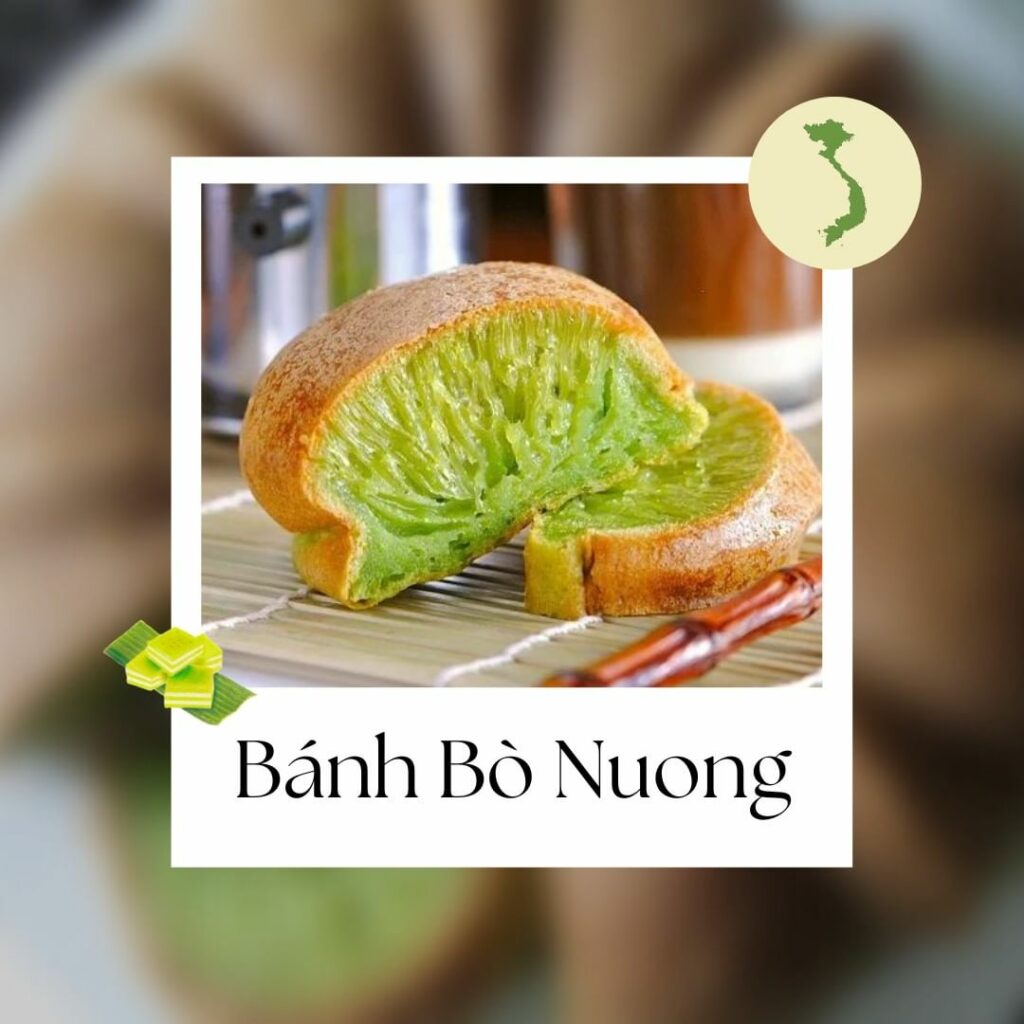
Do you know, “what is Vietnamese honeycomb cake?” Honeycomb cake, also known as banh bo nuong, is a traditional Vietnamese dessert that features a unique texture resembling the honeycomb structure. It is made with a combination of rice flour, tapioca starch, sugar, coconut milk, and eggs, and is typically steamed or baked.
The origins of honeycomb cake are not entirely clear, but it is believed to have been introduced to Vietnam by the Chinese. Over time, the Vietnamese have put their own spin on the recipe, adding coconut milk and other local ingredients to create a distinct flavor.
Honeycomb cake has a significant cultural significance in Vietnam, and is commonly served at weddings, Tet (Vietnamese New Year) celebrations, and other special occasions. It is also a popular street food and snack throughout the country. Its unique texture and sweet, slightly savory flavor make it a beloved dessert among Vietnamese people and those who have had the opportunity to try it.
See more: What is black sticky rice? How to cook black sticky rice?
Vietnamese honeycomb cake recipe
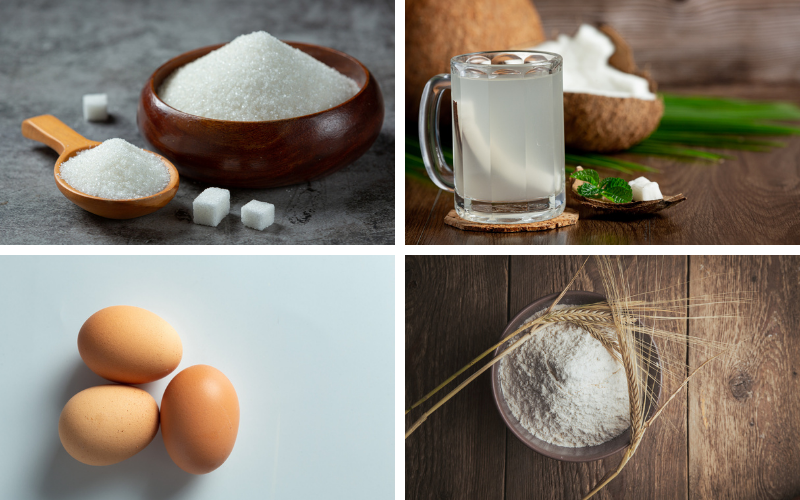
Vietnamese honeycomb cake recipe requires a steamer to cook the cake.
Cooking note
- Yield: 1 cake (9-10 inch round cake)
- Prep Time: 15 minutes
- Cook Time: 45 minutes
- Total Time: 1 hour
- Course: Dessert
- Cuisine: Vietnamese
- Equipment:
- Steamer
- Mixing bowls
- Whisk
- Measuring cups and spoons
- 9-10 inch round cake pan
Ingredients
- 1 cup rice flour
- 1/3 cup tapioca starch
- 1/2 teaspoon salt
- 3/4 cup granulated sugar
- 1 cup coconut milk
- 3 large eggs
- 1 teaspoon baking powder
- 1/2 teaspoon vanilla extract
Tips for choosing high-quality ingredients
Choosing high-quality ingredients is key to making delicious honeycomb cake Vietnamese. Here are some tips to help you select the best ingredients:
- Rice Flour: Look for rice flour that is finely ground and has a bright white color. Avoid rice flour that has a yellowish tint or a coarse texture. Tapioca Starch: Choose tapioca starch that is pure and free of additives. It should be powdery and have a light texture.
- Sugar: Use high-quality granulated sugar that is free of impurities. Look for sugar that has a fine texture and is easy to dissolve.
- Coconut Milk: Use high-quality coconut milk that is smooth and creamy. Avoid coconut milk that has a watery consistency or a grainy texture.
- Eggs: Use fresh, large eggs that are free of cracks or blemishes. Check the expiration date on the carton to ensure that the eggs are still good.
- Baking Powder: Use fresh, high-quality baking powder that is free of clumps. Make sure to check the expiration date to ensure that the baking powder is still effective.
By using high-quality ingredients, you can ensure that your honeycomb cake Vietnamese will have a delicious flavor and a perfect texture. Don’t be afraid to spend a little extra money on top-quality ingredients, as it can make a big difference in the final result.
How to make Vietnamese honeycomb cake?
Follow me, I will step-by-step instructions on how to make Vietnamese honeycomb cake in the right way.
- In a mixing bowl, combine the rice flour, tapioca starch, salt, and sugar. Whisk until well combined.
- In another mixing bowl, whisk together the coconut milk, eggs, baking powder, and vanilla extract.
- Pour the wet ingredients into the dry ingredients and whisk until the mixture is smooth and free of lumps.
- Grease a 9-10 inch round cake pan with cooking spray or butter.
- Pour the batter into the greased cake pan.
- Fill a steamer pot with water and bring it to a boil.
- Place the cake pan in the steamer and steam on high heat for 45 minutes, or until a toothpick inserted into the center of the cake comes out clean.
- Remove the cake pan from the steamer and let it cool for 5–10 minutes.
- Use a knife to loosen the edges of the cake from the pan, then flip the pan over onto a serving plate to remove the cake.
- Let the cake cool to room temperature before serving.
See more: How to Make Banh Tieu?
Table about nutrient facts of Vietnamese honeycomb cake
Here’s a table of the approximate nutrient facts for a serving of honeycomb cake Vietnamese, based on a recipe that yields 1 cake (9-10 inch round cake):
| Nutrient | Amount |
| Calories | 190 |
| Total Fat | 4g |
| Saturated Fat | 3g |
| Cholesterol | 53mg |
| Sodium | 93mg |
| Total Carbohydrate | 35g |
| Dietary Fiber | 0g |
| Sugars | 18g |
| Protein | 3g |
Please note that these nutrient facts may vary slightly depending on the specific ingredients used in the recipe, as well as the serving size. It’s also important to keep in mind portion control when enjoying Vietnamese honeycomb cake calories, as it can be high in sugar and calories.
Common mistakes to avoid during preparation
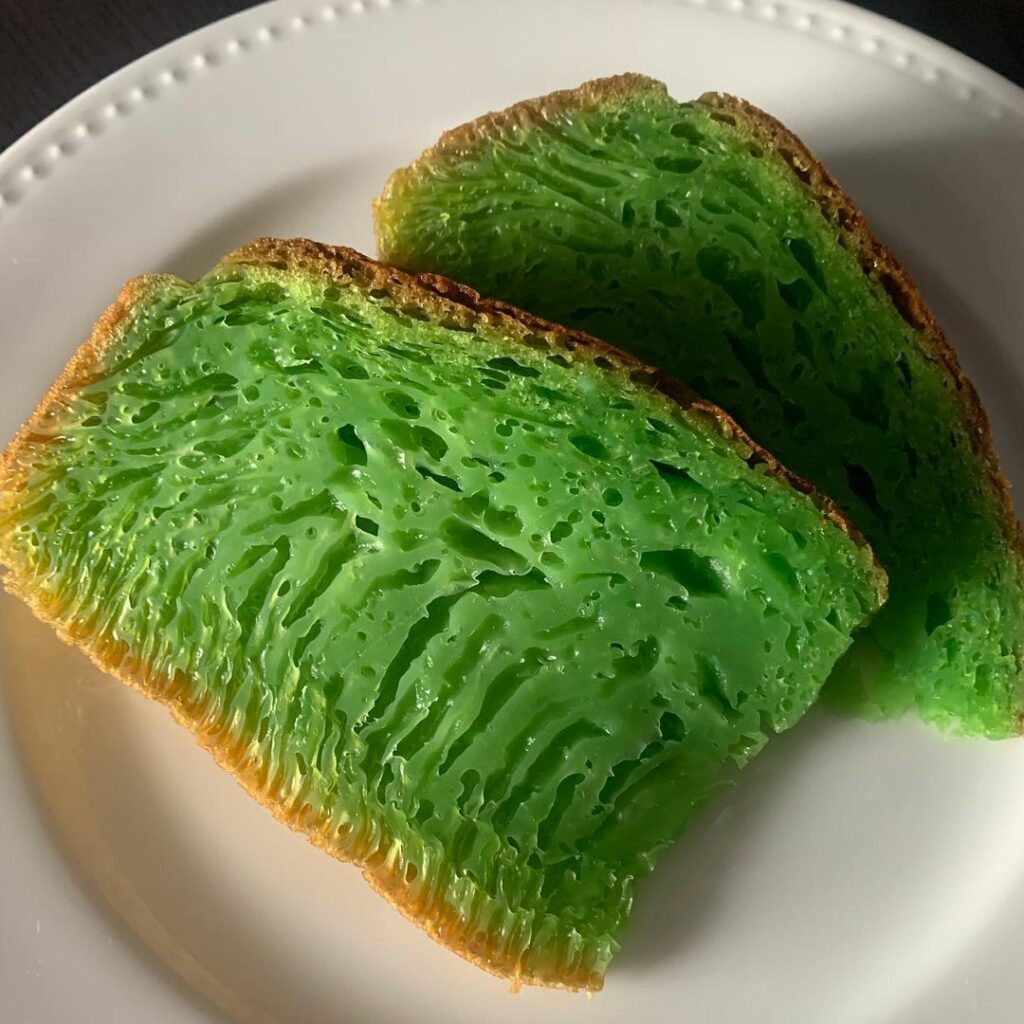
While making Vietnamese honeycomb cake, it’s important to be mindful of common mistakes that can affect the texture and flavor of the final product, it can lead to “banh bo nuong fail” if you make the following mistakes. Here are some mistakes to avoid during preparation:
- Overmixing the Batter: Overmixing the batter can cause the cake to be tough and dense. Mix the batter until it is just combined and there are no lumps.
- Not Greasing the Cake Pan: Not greasing the cake pan can cause the cake to stick and break apart when you try to remove it from the pan. Make sure to use cooking spray or butter to grease the cake pan before pouring in the batter.
- Not Preheating the Steamer: Preheating the steamer is important to ensure that the cake cooks evenly. Make sure to heat up the steamer before placing the cake pan inside.
- Undercooking the Cake: Undercooking the cake can cause it to be gooey and raw in the center. Make sure to steam the cake for the full recommended time and check for doneness with a toothpick.
- Overcrowding the Steamer: Overcrowding the steamer can cause the cake to cook unevenly and result in a dense texture. Make sure to leave enough space around the cake pan for steam to circulate.
- Adding Too Much Baking Powder: Adding too much baking powder can cause the cake to rise too quickly and then collapse. Make sure to measure out the baking powder carefully and follow the recipe instructions.
To avoid these common mistakes, you can ensure that your Vietnamese honeycomb cake turns out perfectly every time.
How to store Vietnamese honeycomb cake?
To store honeycomb cake Vietnamese, allow it to cool to room temperature first. Then, wrap it tightly in plastic wrap or store it in an airtight container to prevent it from drying out or absorbing unwanted odors. You can store the cake at room temperature for up to 2–3 days.
If you want to store the cake for a longer period of time, you can freeze it. Wrap the cake in plastic wrap and then place it in a resealable freezer bag. The cake can be stored in the freezer for up to 2–3 months.
To thaw the cake, remove it from the freezer and let it come to room temperature before unwrapping it. This will prevent the cake from becoming soggy or mushy. Once thawed, you can reheat the cake by steaming it for a few minutes or by warming it in the oven at a low temperature.
It’s important to note that honeycomb cake Vietnamese is best enjoyed fresh, as it can become dry and lose its texture over time. If possible, try to consume the cake within a day or two of making it for optimal flavor and texture.
Can I use substitutions for the traditional ingredients?
While traditional Vietnamese honeycomb cake recipes call for specific ingredients, it is possible to use substitutions if necessary. Here are some possible substitutions for the traditional ingredients:
- Rice Flour: You can substitute rice flour with other gluten-free flour such as cornstarch or potato starch, but this may affect the texture of the cake.
- Tapioca Starch: Cornstarch can be used as a substitute for tapioca starch. However, tapioca starch gives the cake its unique chewy texture, so using a substitute may affect the final result.
- Coconut Milk: You can substitute coconut milk with regular milk or another non-dairy milk such as almond milk or soy milk. However, this will affect the flavor of the cake.
- Eggs: You can substitute eggs with a vegan egg replacement or applesauce, but this may affect the texture of the cake.
- Baking Powder: You can substitute baking powder with a combination of baking soda and cream of tartar, but this may affect the rise of the cake.
While substitutions are possible, it’s important to note that they can affect the texture and flavor of the final product. It’s always best to use traditional ingredients if possible to achieve the most authentic Vietnamese Honeycomb Cake.
Cooking Techniques
Honeycomb cake Vietnamese can be cooked using different methods, each with its own advantages and disadvantages. Here are the most common cooking techniques for honeycomb cake Vietnamese and tips for achieving the perfect texture and flavor:
| Steaming | Baking | Pressure-cooking |
| – It results in a moist and spongy texture with a slightly chewy bite. – The advantage of steaming is that it allows the cake to cook evenly and maintain its shape. – The disadvantage is that it can take longer than other methods. – Make sure to preheat the steamer and steam the cake for the recommended time. | – It results in a slightly drier texture and a crustier exterior. – The advantage of baking is that it requires less preparation time and can be done in a regular oven. – The disadvantage is that it can be more difficult to achieve the perfect texture and flavor. – Make sure to preheat the oven and bake the cake until it is golden brown and a toothpick inserted into the center comes out clean. | – It results in a moist and fluffy texture with a slightly bouncy bite. – The advantage of pressure-cooking is that it is faster – The disadvantage is that it requires a pressure cooker, which not everyone has. – Make sure to follow the recipe instructions carefully and release the pressure slowly. |
Tips for achieving the perfect texture and flavor of Vietnamese honeycomb cake include using high-quality ingredients, following the recipe instructions carefully, and not over-mixing the batter.
It’s also important to let the cake cool to room temperature before serving, as this allows the flavors to develop and the texture to set. Finally, it’s important to store the cake properly to maintain its freshness and texture.
Variation of Vietnamese honeycomb cake
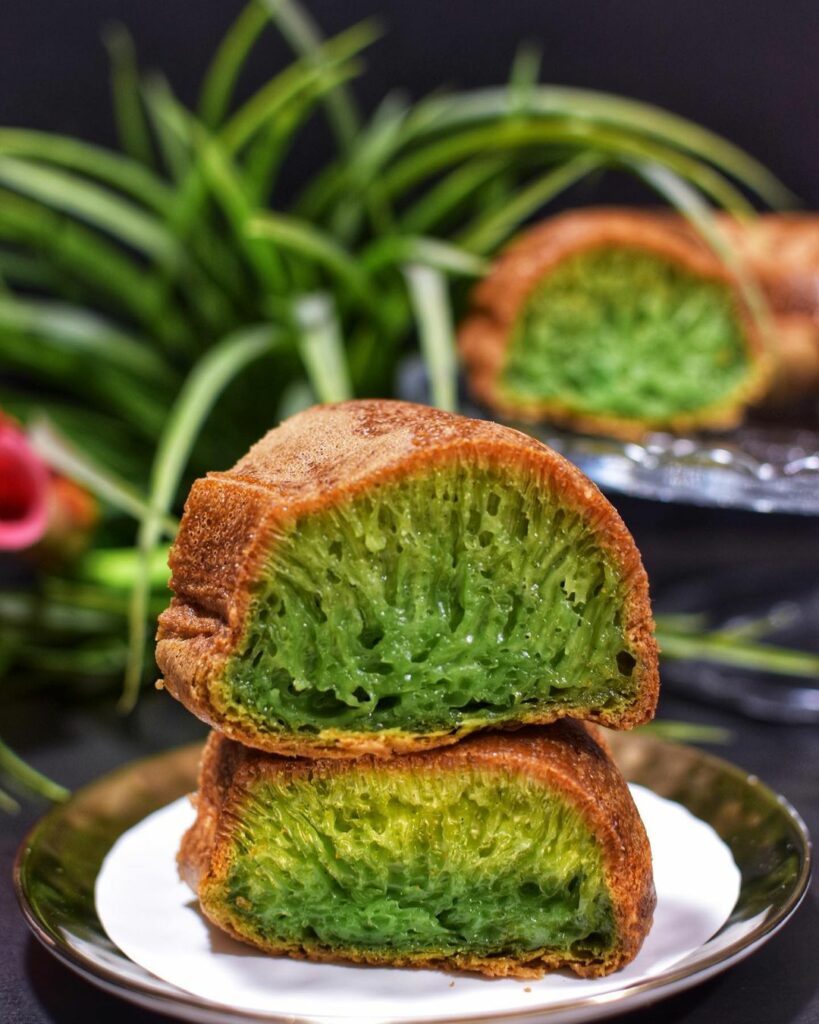
Vietnamese honeycomb cake has regional and cultural variations that feature unique ingredients and flavors.
One popular variation is pandan honeycomb cake, which uses pandan leaves to give the cake a vibrant green color and a sweet, fragrant flavor. Here are some other regional and cultural variations of honeycomb cake Vietnamese:
Bánh bò hấp
The steamed beef cake variation is popular in Northern Vietnam and is steamed with yeast and sugar, resulting in a spongy texture and a subtle sweetness.
Bánh bò xốp
This sponge beef cake variation is made with beer instead of coconut milk, resulting in a lighter and fluffier texture with a slight bitterness.
What are some modern twists on Vietnamese honeycomb cake?
Some modern twists on Vietnamese honeycomb cake include using different flavors, such as chocolate or matcha, and incorporating unique ingredients, such as fruit or nuts, into the cake batter.
Another modern twist is to serve the cake with a modern twist on a traditional dipping sauce, such as a spicy peanut butter sauce or a sweet and sour dipping sauce.
What are service suggestions for Vietnamese honeycomb cake?
Honeycomb cake Vietnamese is a delicious dessert that can be paired with a variety of foods and beverages. Here are some serving suggestions for Vietnamese honeycomb cake:
- Tea: Vietnamese honeycomb cake pairs well with a hot cup of green tea or jasmine tea. The subtle flavors of the tea complement the sweet and delicate flavors of the cake.
- Coconut Milk: Vietnamese honeycomb cake is traditionally made with coconut milk, and a cold glass of coconut milk or coconut water is a refreshing pairing for the cake.
- Fresh Fruit: Vietnamese honeycomb cake pairs well with fresh fruits such as mango, lychee, or dragonfruit. The sweetness of the fruit balances the texture and flavor of the cake.
- Ice Cream: A scoop of vanilla ice cream or coconut ice cream can be a delicious and indulgent pairing for Vietnamese honeycomb cake. The creamy texture of the ice cream complements the spongy texture of the cake.
- Whipped Cream: A dollop of whipped cream or coconut cream can add a light and airy texture to the cake, and the sweetness of the cream can balance the subtle sweetness of the cake.
These serve suggestions for Vietnamese honeycomb cake can be both traditional and modern, and can be adapted to personal preferences and tastes. Whether enjoyed as a simple snack or as part of a more elaborate dessert spread, Vietnamese honeycomb cake is a delicious and versatile dessert that can be paired with a variety of foods and beverages.
Where to find and try Vietnamese honeycomb cake?
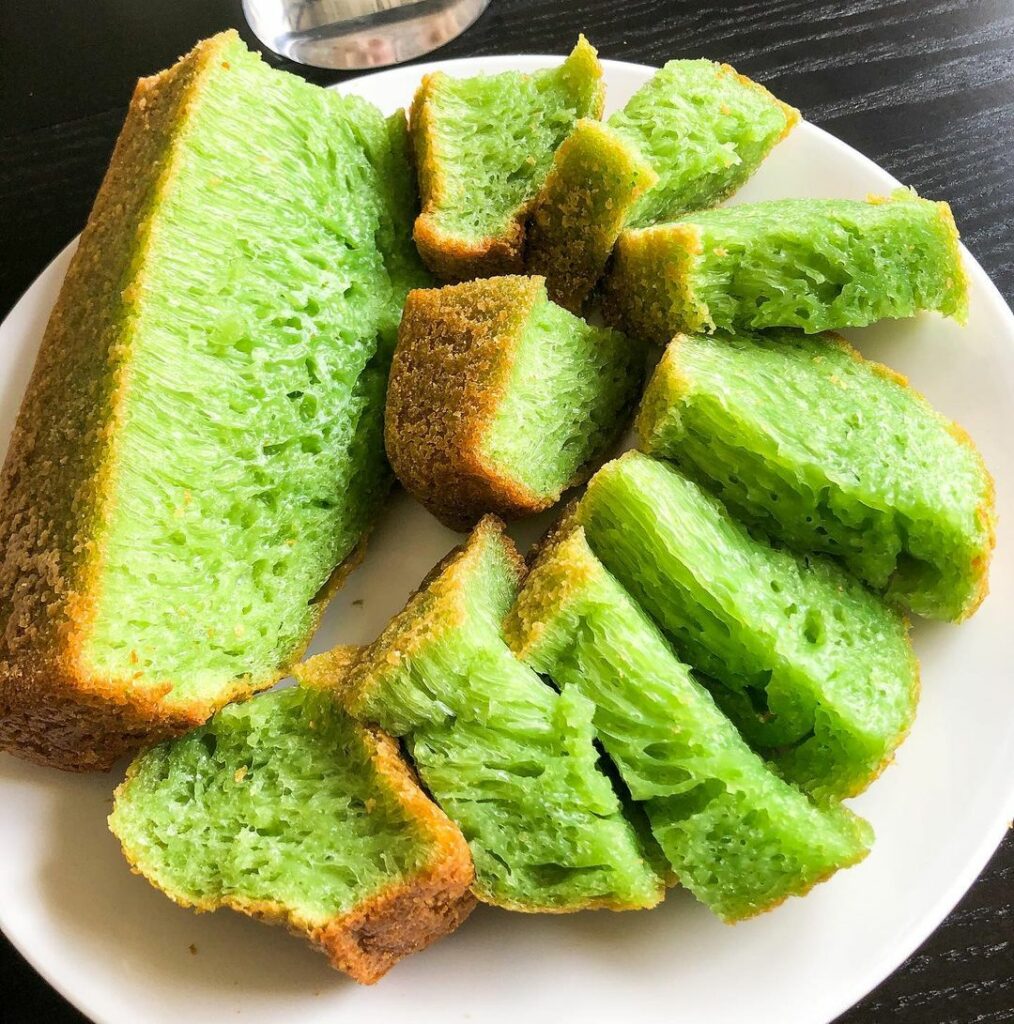
If you’re interested in trying Vietnamese honeycomb cake, there are many popular brands and vendors both in Vietnam and abroad. Here are some tips for finding and trying Vietnamese honeycomb cake:
- Search Online: You can search for Vietnamese honeycomb cake near me to find local bakeries or Vietnamese restaurants that may offer dessert.
- Vietnamese Markets: Vietnamese markets or grocery stores are a great place to find Vietnamese Honeycomb Cake, especially if you’re looking for more authentic versions of the dessert.
- Vietnamese Bakeries: Vietnamese bakeries often offer a variety of traditional Vietnamese desserts, including Vietnamese Honeycomb Cake. Look for local Vietnamese bakeries or check online for bakeries that ship their products.
- Vietnamese Restaurants: Many Vietnamese restaurants offer Vietnamese Honeycomb Cake as a dessert option. Check the menu or ask your server if it’s available.
Popular brands and vendors of Vietnamese honeycomb cake include Ba Le Bakery. Overall, Vietnamese Honeycomb Cake is a delicious and unique dessert that can be found and enjoyed in many locations both in Vietnam and abroad.
If you’re trying Vietnamese honeycomb cake for the first time, it’s recommended to start with a traditional version to get a sense of the original flavors and texture. It’s also important to note that the dessert may be called by different names, such as Bánh Bò Nướng or Bánh Bò Hấp, depending on the region or the vendor.
What prices of Vietnamese honeycomb cake?
The price of Vietnamese honeycomb cake can vary depending on where you buy it and the size of the cake. However, it’s unlikely that you would find Vietnamese honeycomb cake for the price of 3.95 USD, as this would be very low for a specialty item like this.
The price of Vietnamese honeycomb cake can range from around $5 to $20 or more, depending on factors like the quality of ingredients used, the location of the bakery or store, and the size of the cake.
It’s important to note that the price of Vietnamese honeycomb cake is typically affordable and can be a great value for the unique flavors and textures of the dessert. However, prices may also be affected by the use of high-quality ingredients or unique variations, such as pandan honeycomb cake.
See more: Steamed Vietnamese Flan Recipe for Beginner
FAQs
How difficult is it to make Vietnamese honeycomb cake?
Vietnamese honeycomb cake is considered a moderately difficult dessert to make, with some recipes requiring special techniques such as mixing the batter until it reaches a specific consistency and using a steamer or pressure cooker to cook the cake.
However, with proper preparation and attention to the recipe instructions, it is possible to successfully make honeycomb cake Vietnamese at home.
What are some common garnishes for Vietnamese honeycomb cake?
Some common garnishes for Vietnamese honeycomb cake include grated coconut, sesame seeds, and green onions. Grated coconut is a traditional garnish and pairs well with the coconut milk used in the cake.
Sesame seeds add a nutty flavor and a contrasting texture to the cake. Green onions can be used to add a savory note to the cake, and are often paired with a savory dipping sauce.
Can I freeze Vietnamese honeycomb cake?
Vietnamese honeycomb cake can be frozen, but it’s important to note that the texture and flavor may be affected. To freeze the cake, wrap it tightly in plastic wrap and store it in an airtight container.
To thaw, let the cake sit at room temperature for a few hours or overnight in the refrigerator. It’s recommended to consume the cake within a few days of thawing to ensure the best texture and flavor.
Can I make Vietnamese honeycomb cake gluten-free?
Vietnamese honeycomb cake can be made gluten-free by using a gluten-free flour substitute, such as rice flour or potato starch, instead of wheat flour.
It’s important to note that the texture and flavor of the cake may be slightly different when using a gluten-free substitute, but it is still possible to achieve a delicious and authentic Vietnamese honeycomb cake.
Can I make Vietnamese honeycomb cake vegan?
Vietnamese honeycomb cake can also be made vegan by using plant-based substitutes for ingredients such as eggs and dairy. For example, mashed banana or applesauce can be used as a substitute for eggs, and coconut milk can be used instead of dairy milk.
It’s important to note that the texture and flavor may be slightly different when using plant-based substitutes, but it is still possible to achieve a delicious and vegan-friendly Vietnamese honeycomb cake.
Can I make Vietnamese honeycomb cake without a steamer?
It is possible to make Vietnamese honeycomb cake without a steamer, although the texture and flavor may be slightly different from the traditional version.
One alternative method is to use a pressure cooker, which can achieve a similar texture to steaming. Another alternative is to bake the cake in the oven, although this will result in a slightly different texture and crustier exterior.
What is the symbolism behind Vietnamese honeycomb cake?
In Vietnamese culture, Vietnamese honeycomb cake is a symbol of good luck and prosperity and is often served during special occasions such as weddings, Lunar New Year, and other festivals.
The cake’s spongy texture and honeycomb-like appearance are said to represent the idea of growing and expanding, making it a popular dessert to serve during celebrations and important milestones. The cake is also associated with the Vietnamese legend of Bánh Bò, in which a young girl is said to have created the cake as a symbol of her love and devotion to her family.
What is the meaning behind the name “honeycomb cake”?
The name “honeycomb cake” refers to the unique texture of the cake, which is spongy and resembles the honeycomb structure of bees. The texture is achieved by the use of a specific ratio of ingredients and mixing techniques, which results in small air pockets throughout the cake.
How do I know if my Vietnamese honeycomb cake is cooked properly?
To know if your Vietnamese honeycomb cake is cooked properly, there are a few indicators to look for. First, the cake should be slightly golden brown on the outside, with a slightly crusty exterior. When you insert a toothpick or skewer into the center of the cake, it should come out clean and dry, with no batter sticking to it.
The cake should also be slightly firm to the touch but still have a soft and spongy texture. Finally, the cake should have a subtle sweetness and a delicate aroma, with no raw flour taste. By following the recipe instructions carefully and paying attention to these indicators, you can ensure that your Vietnamese honeycomb xake is cooked to perfection.
Conclusion
Finally, Vietnamese honeycomb cake is a unique and delicious dessert that has a special place in Vietnamese culture and cuisine. With its spongy texture and delicate flavor, it’s a dessert that is enjoyed by many both in Vietnam and around the world.
Whether you’re trying it for the first time or looking to experiment with different variations and flavors, Vietnamese honeycomb cake offers a rich culinary experience that is both satisfying and memorable. With proper preparation and attention to the recipe instructions, it is possible to successfully make Vietnamese honeycomb cake at home, and enjoy this traditional dessert with friends and family.
Keep reading: Pandan Jelly Dessert (Che Banh Lot)